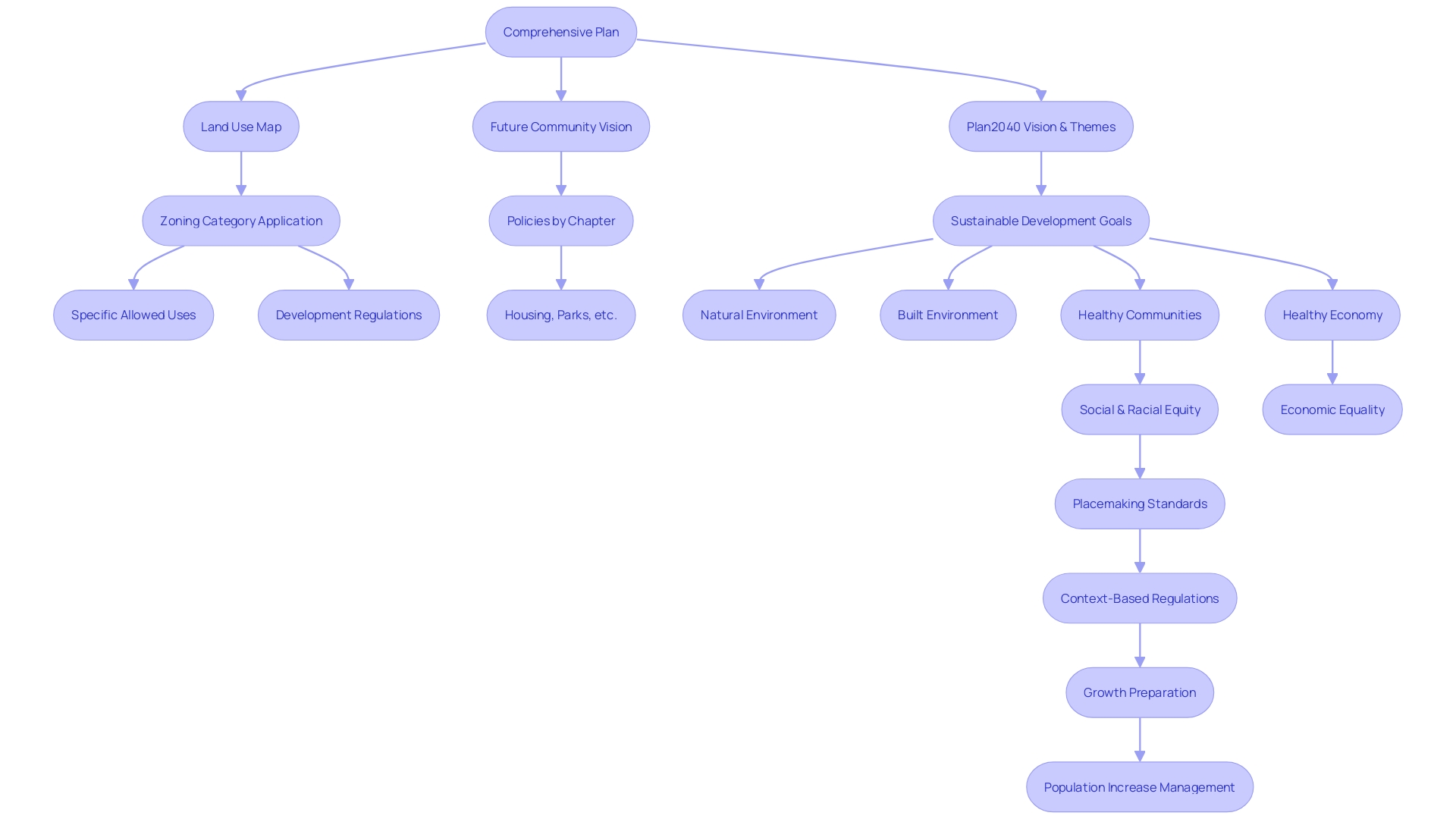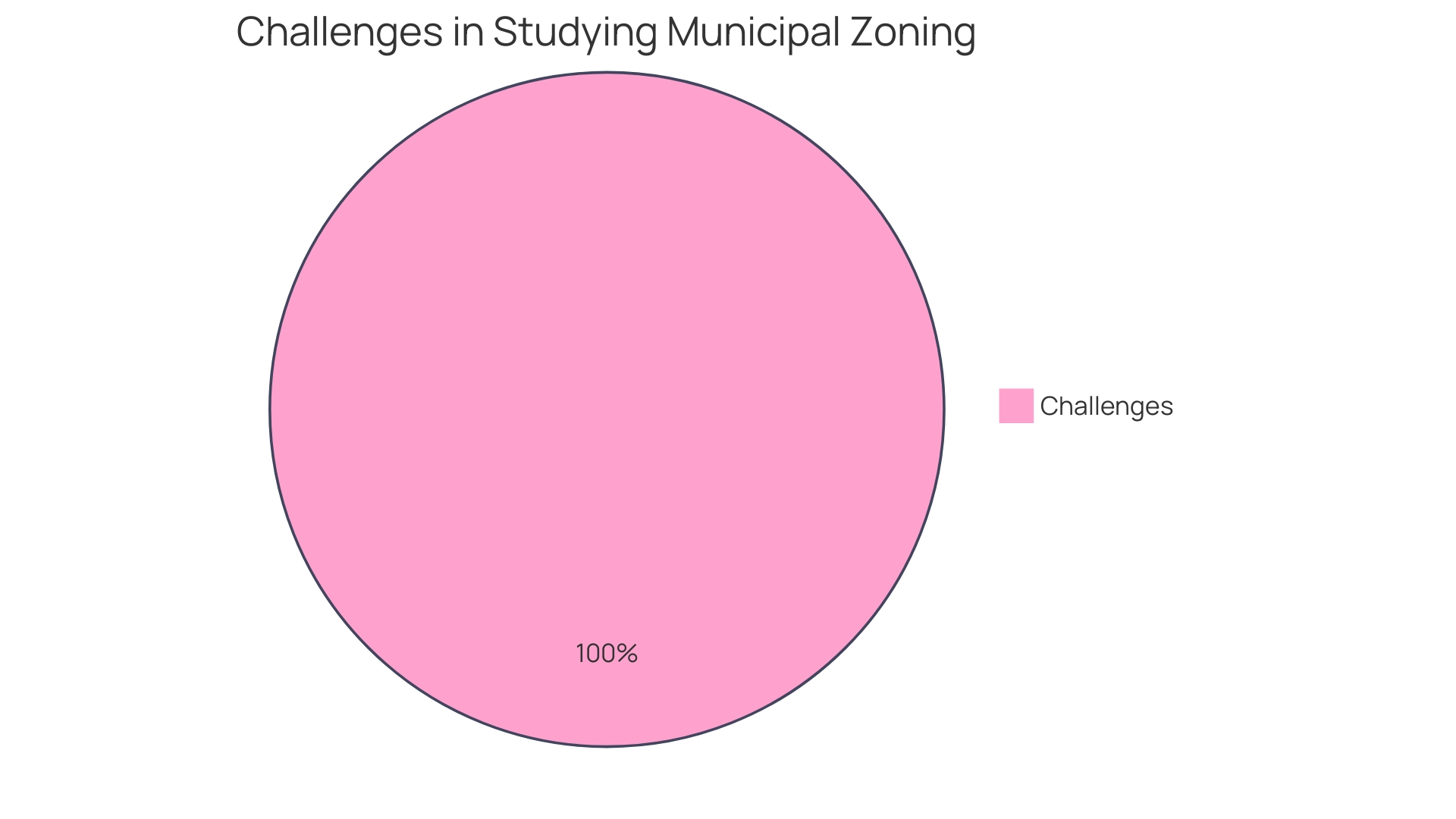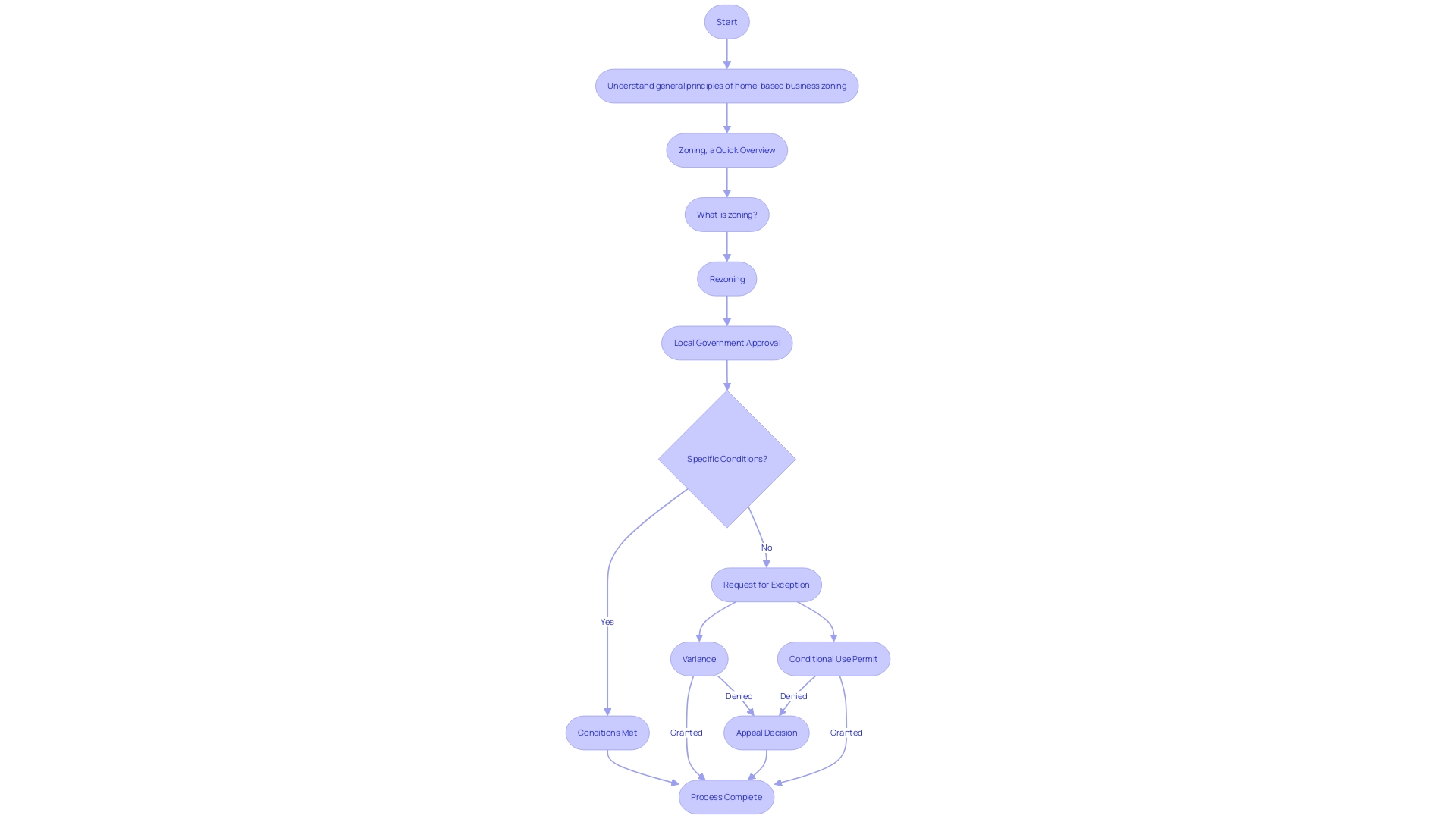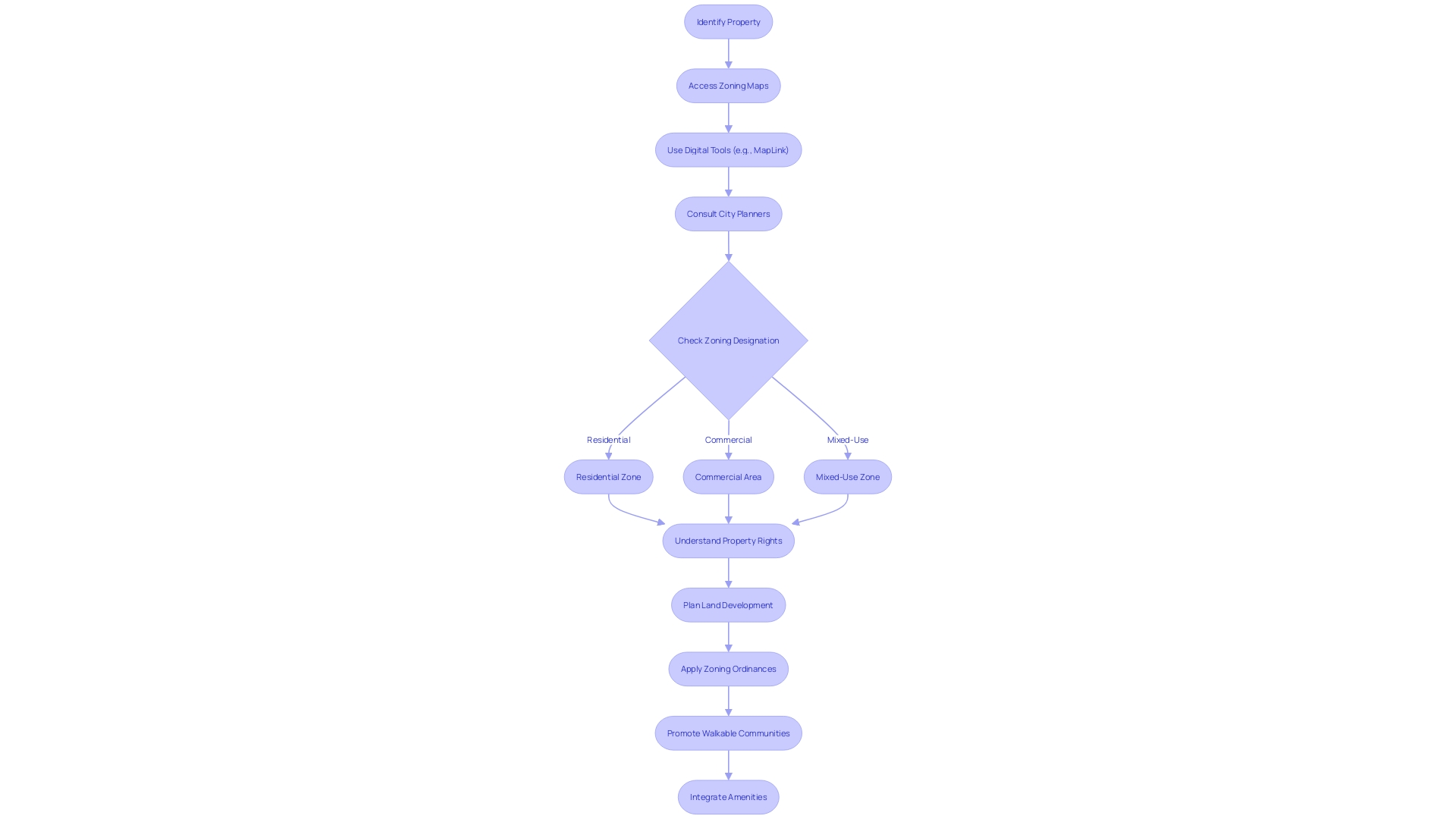Introduction
Zoning codes play a crucial role in shaping the growth and development of communities, ensuring that land use aligns with the environment and the needs of the neighborhood. These codes are designed to foster orderly development, safeguard property values, and enhance the community's quality of life. However, the concept of public welfare, often cited as a justification for zoning restrictions, has faced criticism for being subjective.
To streamline zoning regulations and address pressing issues like housing affordability, experts suggest the implementation of a more objective "base code." The complexities of municipal zoning are well-documented, with studies highlighting the vast diversity in approaches across the nation's thousands of jurisdictions. Recent developments in cities like Chattanooga and Charlottesville demonstrate the dynamic nature of zoning codes, as they undergo comprehensive overhauls to increase housing density and affordability.
Zoning has evolved to become a pervasive regulatory framework that dictates where people can live, work, and engage in recreational activities, effectively shaping the day-to-day existence within urban landscapes. The implications of zoning are profound, impacting not only the physical landscape but also the very fabric of society, as it serves as a tool for governments to plan and control the development of cities and towns.
Purpose of Zoning
Zoning codes fundamentally shape the growth and development of communities, ensuring that land use aligns with the environment and the needs of the neighborhood. These codes are designed to foster orderly development, safeguard property values, and enhance the community's quality of life. However, the concept of public welfare, often cited as a justification for zoning restrictions, has been critiqued for being based on subjective preferences, as noted by Norman Wright.
He suggests that a more objective 'base code' could streamline the complexities of zoning regulations, addressing pressing issues such as housing affordability.
The intricacies of municipal zoning are well-documented, with studies highlighting the vast diversity in approaches across the nation's thousands of jurisdictions. The National Zoning Atlas project, currently covering 6% of these jurisdictions, underscores the need for extensive resources to analyze zoning on a national scale.
Recent news from cities like Chattanooga demonstrates the dynamic nature of zoning codes. Chattanooga's comprehensive overhaul aims to increase housing density and affordability by allowing more diverse types of residential construction on smaller lots. Similarly, Charlottesville is rewriting its zoning ordinance to permit greater residential density, aligning with its Affordable Housing and Comprehensive Plans.
These developments echo historical perspectives on property rights, where early American ideals considered the right to use one's property as inherent and inalienable. Before zoning, control over land use was exercised through nuisance laws and covenants, leading to a patchwork of development. As zoning evolved, it became a pervasive regulatory framework dictating where people can live, work, and engage in recreational activities, effectively shaping the day-to-day existence within urban landscapes.
Types of Zoning Classifications
Land zoning is a fundamental aspect of urban planning that dictates the permissible uses of property within a municipality. It essentially functions as a blueprint for development, ensuring that new projects harmonize with existing infrastructure, and mitigating potential conflicts between different land uses. The classifications within zoning, such as residential, commercial, industrial, and agricultural, serve not only to uphold the orderly development of communities but also to protect the rights of property owners.
Residential zones are primarily allocated for dwellings, creating a tranquil environment for families and individuals to inhabit. Commercial zones, on the other hand, are designated for businesses and services, providing spaces where economic activities can thrive without encroaching on residential tranquility. Industrial zones are essential for economic growth, set apart to host manufacturing and other heavy industries, while agricultural zones safeguard land for farming, preserving resources and rural heritage.
Zoning regulations go beyond just separating different types of uses; they can influence property values, determine the character of neighborhoods, and even shape the availability of affordable housing. For instance, by regulating densities and building heights, zoning can control the urban sprawl and maintain the character of historic districts.
However, zoning is not without its challenges. It can be subject to change based on evolving community needs and shifting policy goals. For example, zoning amendments may be proposed to accommodate more diverse housing options or to respond to demands for sustainable development.
The complex tapestry of zoning laws is further illustrated by comprehensive studies of areas like California, where the single-family zoning prevails extensively. Detailed analyses uncover trends such as the prevalence of single-family zoning and the scarcity of land zoned for mixed-use or 'Missing Middle' housing, which highlights the restrictive nature of current zoning practices on diversifying housing options.
The implications of zoning are profound, impacting not only the physical landscape but also the very fabric of society. It serves as a tool for governments to plan and control the development of cities and towns, affecting where people live, work, and play. These regulations encapsulate the legacy of property rights and continue to shape the evolution of communities across the nation.
How Zoning Laws Work
Local authorities, encompassing cities and counties, wield the power to shape communities through zoning laws. These statutes meticulously chart out the permissible uses of land, imparting a structured landscape where residential, commercial, and industrial zones can coexist without conflict. Intricate zoning regulations delve into specifics such as permissible building heights, setback requirements, and the appropriate density of developments.
The enforcement of these rules hinges on a system of permits and inspections, ensuring that any new construction or alterations are in harmony with the community's vision.
In practice, zoning laws can serve as a catalyst for creating vibrant, walkable neighborhoods. Take Minneapolis, where reformists championed zoning changes as a vehicle for social equity and environmental benefits, successfully integrating voices historically sidelined in land use dialogues. Their advocacy led to reforms that are now being closely watched for their influence on housing affordability and urban design.
Similarly, the city of Charlottesville recently enacted significant zoning modifications to foster the development of affordable housing. This initiative is a testament to the dynamic nature of zoning laws and their potential to adapt to the evolving needs of a community.
The essence of zoning is to maintain order, yet it can also be a tool for transformation. In Somerville, Massachusetts, the integration of residential zones with local businesses creates an enviable urban tapestry, where convenience and community are just a short walk away. However, it's a balance that comes at a cost, as reflected in the steep real estate prices indicative of high demand for such an appealing lifestyle.
Zoning's historical roots are deeply intertwined with the American ethos of property rights. The inception of zoning laws marked a departure from earlier practices where land use was governed by nuisance laws and private agreements. Today, zoning stands as a hallmark of urban planning, sculpting cities into organized, functional entities, while also facing challenges and legal scrutiny as communities seek to redefine their landscapes in pursuit of progress and inclusivity.
Key Components of Zoning Ordinances
Zoning ordinances are instrumental in shaping the urban landscape, consisting of components such as zoning maps that delineate various districts within a jurisdiction. Each zoning district is governed by specific regulations, outlining permissible uses and ensuring that developments are congruent with established district purposes. These codes also provide precise definitions to maintain clarity and uniformity in the interpretation of zoning laws.
A critical aspect of zoning is addressing non-conforming uses; these are properties that predate and do not align with current zoning regulations.
In examining the impact of zoning, case studies reveal the profound influence it has on community development. For instance, Houston's decision to lower minimum-lot-size requirements demonstrates how zoning can affect housing affordability and urban density. By allowing more homes to be built on a given acre, the city addressed issues related to housing prices, sprawl, and accessibility.
Conversely, excessive minimum-lot-size requirements can hinder the creation of affordable housing and promote segregation.
Reform efforts in cities like Minneapolis, where advocacy for housing affordability and racial justice has led to significant zoning changes, further illustrate the power of zoning in urban planning. These reforms have already begun to influence building trends and housing prices, showcasing the potential of zoning as a tool for social and environmental progress.
Zoning's pervasive role in everyday life cannot be overstated. It dictates where people live, work, and engage in leisure activities, effectively planning community operations and growth. The origins of zoning in America hark back to the foundational principle that property rights include the right to use one's property, a concept that has evolved significantly over time.
Today, zoning continues to be a central aspect of urban planning, shaping the built environment and the daily experiences of millions of Americans.

Understanding Zoning Districts
Zoning districts are the building blocks of urban planning, delineating spaces within communities for specific land uses, each governed by a distinct set of rules. Residential zones, for instance, are subdivided based on housing density, offering a spectrum from single-family homes to multi-unit dwellings. On the other hand, commercial zones cater to varying scales of commerce, from local boutiques to sprawling shopping centers, while industrial zones accommodate activities from light manufacturing to heavy industry.
Notably, mixed-use districts epitomize urban diversity, merging residential, commercial, and sometimes industrial functions, cultivating dynamic neighborhoods.
As zoning practices evolve, some cities, like Minneapolis, have embraced reforms to tackle housing affordability and inclusivity. Such changes, often driven by advocacy for racial justice and environmental sustainability, have started to show effects on construction and housing costs. Similarly, the Institute for Justice's Zoning Justice Project champions the liberty of property utilization, a testament to the growing resistance against overly restrictive zoning that undermines property rights.
Recent developments, such as Charlottesville's zoning overhaul, aim to simplify the construction process, thereby increasing affordable housing availability. This exemplifies a nationwide trend towards more flexible land use policies. However, the National Zoning Atlas reveals that only a fraction of land allows for mixed-use developments or 'Missing Middle' housing, highlighting the ongoing dominance of single-family home zoning.
Understanding the breadth and intricacies of zoning is a colossal task, considering the United States has roughly 39,000 local governments, each with unique zoning approaches. The Atlas project has barely scratched the surface, covering just 6% of jurisdictions, home to 35 million people. This endeavor, requiring extensive human research, underscores the varying zoning landscapes across the nation and the need for substantial resources to map them comprehensively.
The implications of zoning are profound, framing everything from neighborhood character to economic opportunities. With a vast database detailing over 2,600 U.S. municipalities' zoning codes, researchers and policymakers alike can dissect the impact of minimum lot sizes, density caps, parking requirements, and building height limits on urban development. This database is not static but rather an evolving tool for ongoing zoning analysis and public policy debate.

Regulations and Restrictions
Zoning regulations serve as the architectural blueprint of a community, dictating the permissible uses of land within different zones to shape the urban landscape. These rules encompass a wide array of urban planning elements, such as the size of buildings, setbacks from property lines, parking provisions, landscape design, and permissible signage. These guidelines are not arbitrary; rather, they aim to preserve the unique character and intended use of each district, balancing development with public safety, efficient traffic circulation, and environmental stewardship.
Cities like Minneapolis and Somerville highlight the dynamic nature of zoning in addressing modern issues of housing affordability, racial equity, and environmental sustainability. In Minneapolis, significant zoning reforms were enacted through the active involvement of often-marginalized voices, shaking up the status quo of land use and sparking discussions on housing prices and urban development. Similarly, Somerville's desirable traits, such as walkability and a vibrant community atmosphere, reflect the interplay of zoning with market demands and urban attractiveness.
Recent developments, like the Provincial Planning Statement (PPS) of 2024, underline the evolving landscape of land use planning, emphasizing the construction of adequate housing, sustainable economic development, and the integration of essential infrastructure while safeguarding environmental and cultural resources.
These examples and policy directions resonate with the foundational American belief in the natural rights to life, liberty, and property. In the past, this philosophy translated into a reluctance to restrict property use through zoning, which was seen as an infringement on individual liberties. However, the evolution of zoning has been driven by the recognition that structured urban planning can enhance the quality of life, create efficient cities, and ensure the orderly development of communities.
At the heart of contemporary zoning is a delicate balance—protecting individual property rights while promoting the collective well-being. This is reflected in the ongoing dialogue and adjustments to zoning ordinances, which are subject to change as cities respond to shifting conditions and stakeholder input. Zoning, therefore, is not just a static set of rules but a living framework that adapts to the aspirations and challenges of urban life.
Applications and Approvals: Rezoning, Conditional Uses, and Variances
Navigating zoning regulations can be complex, especially when property owners or developers seek to modify the existing framework to accommodate specific projects. One path to achieving such modifications is through rezoning, which involves amending the current zoning classification of a piece of land. This process requires local government approval and is a key method for adapting land use to meet evolving community needs.
Another route is obtaining conditional use permits, which grant permission for certain uses not ordinarily allowed within a zoning district, provided they meet specific conditions and are found compatible with the surrounding area. For cases where unique circumstances or hardships prevent compliance with zoning ordinances, variances are an option. Variances relax zoning rules for a particular property, allowing for an exception to certain requirements.
These avenues for altering land use are underpinned by a deep understanding of property rights, which are often conceptualized as a bundle of rights and responsibilities defined by law. Property rights extend into three dimensions, accounting for airspace and subterranean space, reflecting the complexity of modern land use. This multifaceted nature of property rights is acknowledged in property title systems globally.
The significance of zoning regulations becomes even more apparent considering the current housing crisis in the United States. Cities like Minneapolis and New York are re-evaluating their zoning codes to address housing shortages and affordability challenges. These efforts underscore the importance of flexible and responsive zoning practices to increase housing supply and foster urban redevelopment.
Experts like Brian J. Connolly, Assistant Professor of Business Law at the University of Michigan, emphasize the importance of public and private regulation of land use in relation to housing affordability. Connolly's work revolves around real estate, land use, and development law, providing insight into how legal challenges and reforms can impact zoning practices. His research and expertise are instrumental for planners and advocates working to implement and defend zoning reforms essential for community growth and sustainability.
With zoning intricately shaping where individuals live, work, and engage in recreational activities, it is crucial to approach changes to zoning regulations with a comprehensive understanding of property rights, community needs, and legal frameworks to guide sustainable development.

Finding Your Property’s Zoning Designation
Understanding the zoning designation of land is crucial for discerning permissible activities and restrictions attached to the property. Local authorities typically provide resources such as zoning maps and digital tools, accessible through municipal websites or planning departments, to assist in identifying a property's zoning status. For precision and the latest data, direct consultation with city planners is advisable.
The significance of comprehending zoning classifications becomes apparent when contemplating development or changes in land use, as it underpins adherence to regulatory standards.
Zoning, as a concept, originated with ordinances in Los Angeles in 1904 and has evolved significantly since. It serves as a fundamental aspect of urban planning, categorizing land for specific uses, from residential neighborhoods to industrial districts. These zones are carefully designed to ensure new developments harmonize with existing ones and to regulate the impact of commercial and industrial expansion, sometimes affecting the availability of affordable housing.
Awareness of zoning intricacies was highlighted in a recent case where a Palo Alto property owner faced challenges due to outdated zoning maps that misidentified the permissible use of their land. This instance underscores the importance of accurate zoning information which can have profound implications on property rights and land development.
For those seeking to grasp zoning in a global context, tools like MapLink offer interactive online maps with easy-to-follow menus, beneficial for determining business locations or understanding property possibilities in various cities. This planning tool reflects the necessity for translation services when dealing with international properties.
Furthermore, it's essential to recognize the technological advancements in accessing zoning information, such as GIS, SQL, and various programming languages that enhance the precision and ease of obtaining zoning data. Pogodata, for instance, has emerged as a notable platform, receiving over 21,000 visits monthly, thus demonstrating the relevance of accessible zoning information to a broad audience.

Challenges and Evolution of Zoning Codes
As communities evolve, so too must the zoning codes that shape them. These codes are at the heart of balancing development and preserving the unique character of neighborhoods. They are being reexamined with a critical eye, especially in light of the United States' housing crisis.
With a shortfall of millions of units, particularly for low-income earners, half of all renters are allocating more than one-third of their income to housing costs.
To address these challenges, cities are reevaluating their zoning regulations, often finding them too inflexible and obstructive for new housing projects. For example, the first comprehensive overhaul of zoning codes in Chattanooga reflects a trend towards increased flexibility, allowing for various housing types, including townhomes, multi-family buildings, and smaller single-unit homes. This shift aims to foster a more diverse urban core and alleviate financial pressures by enabling more affordable housing options.
Moreover, a national initiative, the National Zoning Atlas, is spearheading the effort to standardize and map zoning codes across the country, with over 20 teams working in collaboration with universities, non-profits, and government-funded agencies. The Atlas seeks to provide clarity on the patchwork of restrictive zoning laws and facilitate the transformation of these regulations. Yet, the scale of this project is immense, covering about 39,000 local governments and requiring significant resources and human research to complete.
Legal experts like Professor Brian J. Connolly focus on the relationship between public and private land use regulation and housing affordability. His work emphasizes the importance of defending zoning reforms that contribute to urban redevelopment and more equitable housing markets.
Reflecting on America's founding principles of property rights, it is evident that zoning has strayed from its original intent, often being used to enforce the preferences of a few influential individuals. As Norman Wright suggests in his discourse on 'Less but Better Zoning,' redefining public welfare goals in zoning can lead to more objective and simplified regulations, potentially overturning ineffective restrictions that exacerbate housing affordability issues.
This dynamic process of revising zoning codes is founded on robust community engagement, with public hearings and collaborations between government officials, planning experts, and stakeholders. The objective is to forge sustainable and inclusive communities that can thrive for generations, accommodating new technologies, industries, and demographic changes while also addressing environmental, transportation, and social equity concerns.

Importance of Zoning for Community Development
Zoning serves as the foundational blueprint of urban development, delineating land for specific purposes such as residential, commercial, and mixed-use areas. This systematic partitioning creates a harmonious urban landscape, preventing the disarray that could arise from incompatible land uses. For instance, imagine the disruption if a bustling nightclub were to open amidst a tranquil residential block.
Zoning averts such conflicts, fostering a cohesive environment where businesses and homes can coexist without friction.
The strategic application of zoning regulations can also enhance the fabric of community life. Flexible zoning allows for mixed-use areas where one can effortlessly transition from living spaces to retail shops, offices, and community amenities. Such an integrated approach facilitates a walkable neighborhood, reinforcing the connection between residents and their local businesses and services.
In cities like Winnipeg, the concept of 'infill' has been introduced to revitalize existing neighborhoods. Infill involves integrating new housing into established areas, maximizing the use of existing infrastructure and bolstering community dynamics. Despite some resistance, this approach exemplifies the evolving nature of zoning and community development.
Moreover, recent zoning reforms, such as those in Minneapolis and Charlottesville, have aimed to address challenges like housing affordability, social equity, and environmental concerns. By rewriting zoning ordinances, these cities are enabling more residential density, providing incentives for below-market housing, and adapting to the ever-changing needs of their residents.
Zoning is not just about land use; it is deeply intertwined with the rights of property owners and the broader societal goals of a community. It reflects a balance between individual property rights and the collective interest, guiding how we live, work, and play in our urban environments.
Conclusion
Zoning codes shape communities by aligning land use with environmental and neighborhood needs, safeguarding property values, and enhancing quality of life. To streamline regulations and address housing affordability, experts propose implementing a more objective "base code." Recent overhauls in Chattanooga and Charlottesville highlight the dynamic nature of zoning.
It dictates where people live, work, and engage in recreational activities, profoundly impacting urban landscapes and society.
Zoning is a fundamental aspect of urban planning, ensuring new projects harmonize with existing infrastructure and protect property rights. It influences property values, neighborhood character, and the availability of affordable housing. Local authorities use zoning laws to shape communities, creating vibrant, walkable neighborhoods.
Zoning has evolved from its historical roots in property rights to become a hallmark of urban planning.
Zoning ordinances consist of maps and regulations for each district, addressing non-conforming uses. It significantly impacts community development, as seen in Houston's and Minneapolis' zoning reforms. Understanding a property's zoning designation is crucial for guiding land development and protecting property rights.
Zoning codes are being reevaluated to address challenges like housing affordability. They play a vital role in shaping communities, creating harmonious urban landscapes, and enhancing community life. Zoning facilitates integrated neighborhoods and the revitalization of existing areas.
Recent reforms aim to address housing affordability and social equity. Zoning is a dynamic framework that balances property rights with the collective well-being, guiding sustainable development and the creation of vibrant, inclusive communities.




